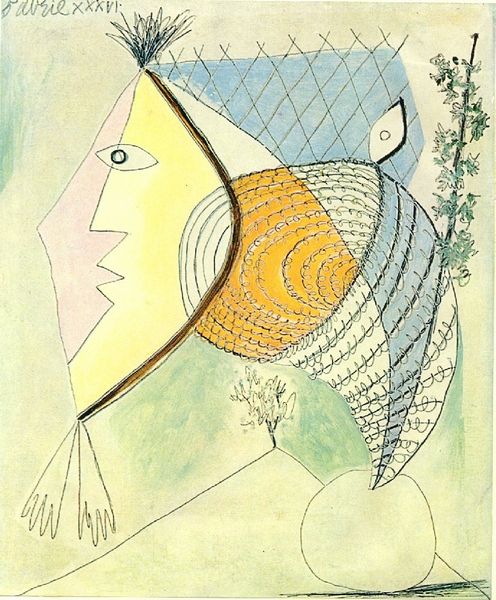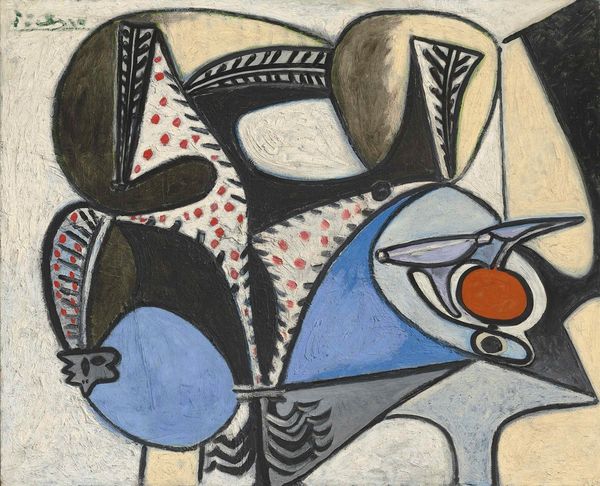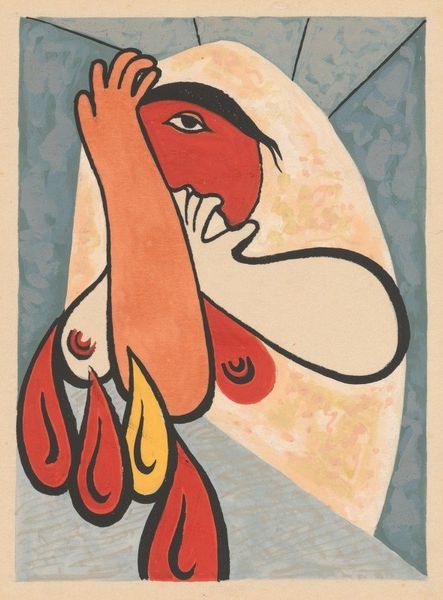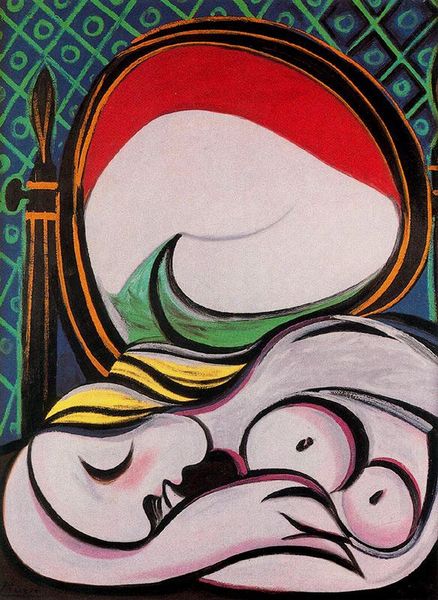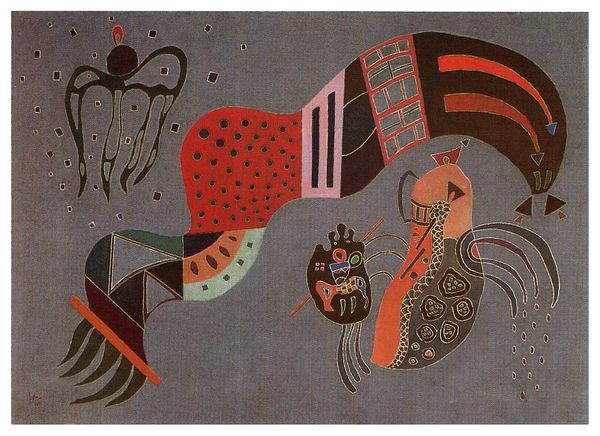
Copyright: Pablo Picasso,Fair Use
Editor: So this is Picasso's "Reclining Woman" from 1932, done in oil paint. It's such a striking image, almost dreamlike. How do you interpret this work? Curator: This painting offers us a lens into Picasso’s complex relationship with representation, particularly of women. He painted numerous portraits of his lovers, often fragmenting and reassembling their features. In this context, "Reclining Woman" prompts us to ask: How does Picasso's gaze intersect with power dynamics, and how can we understand these portraits within feminist frameworks? What does it mean to deconstruct and reconstruct the female form, especially considering the historical context of objectification and the male gaze in art? Editor: That's interesting. So, you're saying it's not just about aesthetics, but about the power dynamic between Picasso and the women he depicted? Curator: Precisely. It encourages a deeper examination of the artist’s role and the socio-political implications of artistic representation. Does the fragmentation convey empowerment, vulnerability, or something in between? Thinking critically about these questions allows us to have a nuanced discussion about his artistic legacy. Editor: I see, it provides an opening for understanding gendered narratives within modernism. It's definitely made me see it differently. Curator: Exactly, and art gives us opportunities to ask more. Perhaps the real masterpiece is in the conversations sparked and new perspectives taken away.
Comments
No comments
Be the first to comment and join the conversation on the ultimate creative platform.



